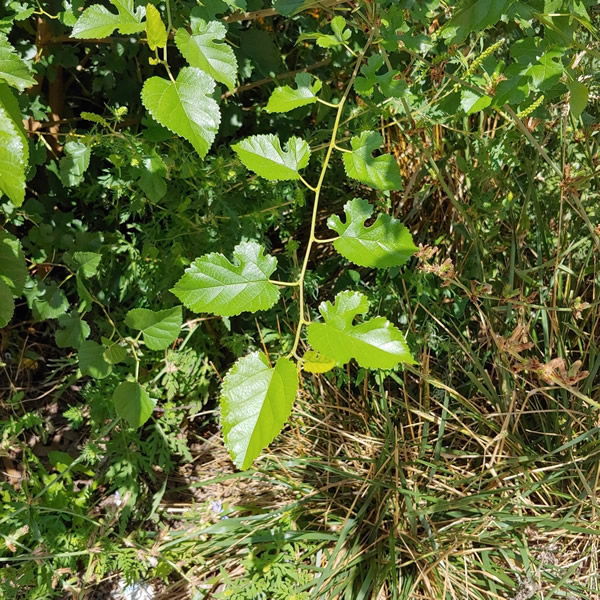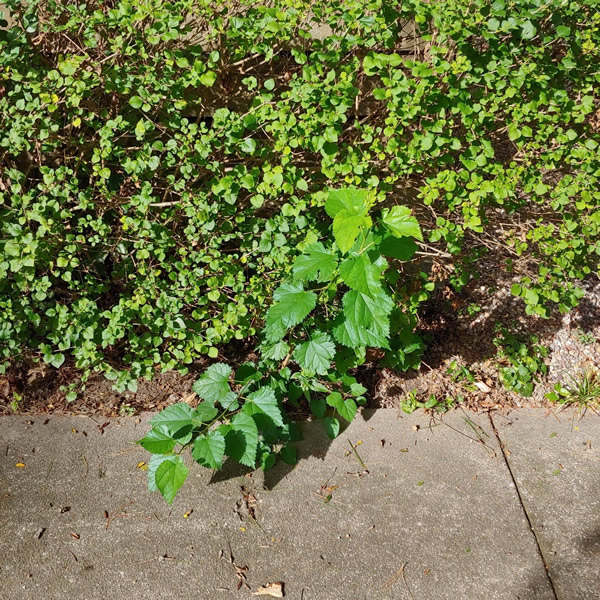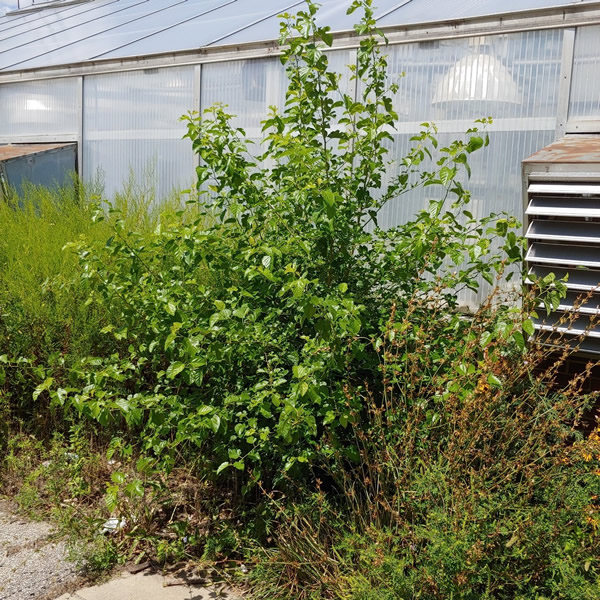Issue 10, August 30, 2019
Mulberry Tree Seedlings in the Lawn and Landscape
My relationship with mulberry is bittersweet. I have fond memories of picking the berry-like fruits as a child and using them to decorate the mud pies we had made. My own children love picking and eating the fruits as well. However, as an adult, my love of mulberry has soured a bit and my children are sad when I express my strong disdain for it. The fact is that white mulberry (Morus alba) is a weedy species and as a gardener with mulberry trees in the neighborhood, I have removed hundreds if not thousands of young mulberry seedlings from my property over the last 20 years. Perhaps my children should assist with those efforts in order to gain a new understanding of the downsides to having mulberry trees nearby.
The birds and certain mammals, however, are quite fond of mulberry. They feed on the tasty fruits and spread the seeds wherever they fly. Seeds are tiny but numerous. Each white mulberry seed is capable of growing into a 20-50 ft. or larger tree. This native to China is related to our native red mulberry. White mulberry has hairless leaves, red-brown buds, and yellow-brown bark, however, the two can hybridize. Mulberry can be difficult to identify overall due to the variations in leaf shape. One branch may produce both leaves that are lobed and leaves that are unlobed. Younger trees tend to have more irregularly-lobed leaves while older trees tend to have no lobing. Leaves are shiny and bright to light green on the upper surface. The underside is pale green and smooth except for hairs along the main veins. Leaves are alternate, simple and 2-4 in. long. The leaf margins are toothed.

Mulberry seedlings.

Both lobed and unlobed leaves are present on this branch.
Mulberry is common along woodland edges and will grow along roadsides, in wastelands, and in landscapes. Seedlings and young trees can typically be found growing in the nearby vicinity of mature mulberry trees. Mulberry cannot tolerate shade but can tolerate poor soils and dry conditions. I have seen it grow in a lawn that had gone dormant due to hot dry conditions.
What can you do about these situations? Mulch can be used to help prevent weed seed germination. However, I am a faithful mulch user and I still find mulberry capable of sprouting in spite of mulch. Once seedlings appear in a landscape bed they can be pulled somewhat easily by hand. Wear gloves as the milky sap in the stems can irritate skin. If the stems are broken off, the plant will return. Remove the roots if at all possible. Seedlings are best removed after a rain when the soil is moist. Larger plants may need to be dug up or cut back with clippers. A brush killer herbicide such as triclopyr can then be painted on the cut surface or perhaps applied to the bark. Read and follow all label directions very carefully.

Mulberry growing at the edge of bushes in a landscape.

Left to grow in a landscape, mulberry will develop into a small tree or shrub form within a few years.
In lawns, simply mow seedlings off relatively soon. Do not wait for them to grow several inches. Mowing regularly should take care of the problem. Alternatively, broadleaf herbicides labeled for use on lawns may be used. Of course, eliminating the source of the seeds with one sharp cut would be effective. It is, however, important to maintain a good relationship with your neighbors. Bear in mind that what you see as a weed, may instead be seen as a source of joy to them, eliciting childhood memories of pies.
Weeds of the Northeast
Invasive Plants of the Upper Midwest: An Illustrated Guide to their Identification and Control
Author:
Michelle Wiesbrook